The most widely used Content Management Systems are wordpress, joomla and drupal as per statistics. The highest CMS platforms that are held as hacking targets are wordpress followed by joomla, drupal and the rest are other CMS’s.
Before dwelling on the ways to secure CMS we could list the ways in which hackers could gain control over the website.
- Easily accessible through the login screen
The frontend login can be easy for the users but it’s a favorite possible way for hackers and bots to gain access. The password strength also plays a vital role, In case if the password strength is weak it can be easily cracked. As admin has an access to the same website there is a possible scenario where a hacker would input sequence of passwords multiple times to gain access to the admin panel.
- Outdated websites
Using an older CMS version that is obsolete also means that the security of the system has not been updated. In every version of the software update, new security fixes and upgrades are been released.
Using additional plugins, modules, themes and other injections that are not verified are one of the reasons for hacking , hence if their vulnerabilities are not fixed they give way to high possibilities for hackers to gain access through these unverified plugins.
These are the vulnerabilities through which a website can be hacked easily, however in case we develop the website using strong security practices it would be more reliable and gives away less possibility to hacking. We have ways and solutions to secure CMS websites which are discussed below:
Two Factor Authentications (2FA)
A second layer security during the login would be essential in order to tighten the security of the website. Authenticator plugins can be used that would send an OTP to the registered mobile or email, once verified the user would be able to login.
Restrict the number of login attempts
Restricting the number of login attempts would eliminate brute force attacks, as well as decrease the possibility of hackers or bots to gain access to the system.
Verified plugins
As we had discussed about vulnerabilities in installing unverified plugins, it is recommended to install verified plugins in order to keep the system secure.
Implement a firewall
Firewall acts as an extra security layer to the infrastructure in order to block unwanted IP’s. Ensuring firewall is in place for all cms websites provides additional security and is also useful to track suspicious activities.
Keep the website updated
CMS site and all the plugins needs to be updated at regular intervals whenever an update is notified. Developers would often release fixes and upgrades that would include new security fixes ensuring the website is kept away from threats.
SSL Certificate
SSL certificate is added to increase the security layers of the website, an SSL certificate is a bit of code on the server that provides security between online communications. When a web browser contacts a secured website, the SSL certificate establishes an encrypted connection.
Access permissions to users
Restricting the access to certain modules of the application works greatly in increasing the security.
Change passwords on regular basis
Change passwords often and also increase the password strength by giving special characters and other unique sequences.
Fortunesoft has years of experience in Content management system development and CMS services. We have experienced CMS developers who develop rich and secure websites. We can build secure CMS websites for your business development. You can reach out to us by filling our contact us form.






